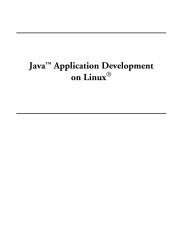Introduction In recent years, there has been considerable ... - Dator
Introduction In recent years, there has been considerable ... - Dator
Introduction In recent years, there has been considerable ... - Dator
Create successful ePaper yourself
Turn your PDF publications into a flip-book with our unique Google optimized e-Paper software.
3<strong><strong>In</strong>troduction</strong>Dietary lectins are protein antigens which bind to surface glycoproteins (orglycolipids) on erythrocytes or lymphocytes. (1) They function as both allergens andhemagglutinins. (2) They are found in plants and animals, and are present in smallamounts in 30% of American foods, more so in a whole-grain diet. (2)Lectins have potent in vivo effects. When consumed in excess by sensitiveindividuals, they can cause 3 primary physiological reactions:Lectins can causesevere intestinal damage, disrupting digestion and causing nutrient deficiencies. (3)They can provoke IgG and IgM antibodies causing Gell-Coombs Type 2 food allergiesand other immune responses. (3,4) And they can bind to erythrocytes, simultaneouslywith immune factors, causing hemagglutination and anemia. (5) Of the 119 knowndietary lectins, about half are panhemagglutinins, clumping all blood types.Theremainder are blood-type specific. <strong>In</strong> general, lectins alter host resistance to infection,cause failure to thrive, and can even lead to death in experimental animals. (2)HistoryLectins have <strong>been</strong> known for a century. They were discovered in castor beansby Stillmark in 1888 (6), and in non-toxic plants (beans and lentils) in 1907. (7) By1945 Boyd found that some lectins were blood-type specific. He reported that limabeans will only agglutinate blood type A. (6) Since that time lectins have <strong>been</strong> found inboth plants and animals -- particularly in edible cereals, beans, seeds, nuts, fish andshellfish. (7) And some foods are known to have 2 or more lectins. Many speciesspecificlectins have also <strong>been</strong> identified.Today lectins are commonly used inlaboratories to type blood, particularly type A1. (8)dator8.info














